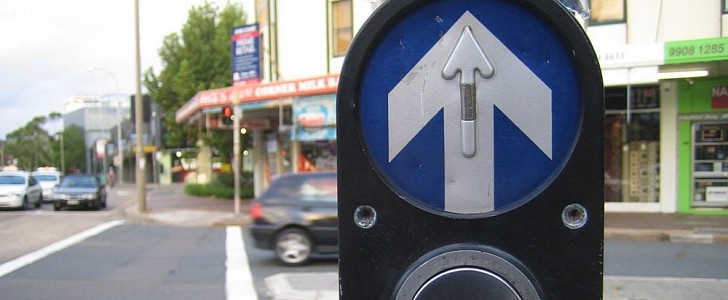We live in a time when everything should become contactless because of obvious reasons, and the city of Adelaide in South Australia knows exactly where such an approach should be used.
The local authorities have recently announced a pilot program for iTouch, a new technology that replaces the traditional pedestrian push button control with a contactless system.
So technically, the pedestrian crossings can now be activated by anyone without actually touching the button, which the Adelaide officials believe is the right way to go in order to make the whole thing more convenient but also to improve the hygiene and avoid touching the same button that everybody puts their hand on.
The new contactless system is supplied by Australian company Aldridge Traffic Systems, which has also created a device called iTouch+ and specifically aimed at seniors and disability cardholders. In this case, the crossing time can be extended by tapping the card to a sensor, thus increasing the red light for cars.
But how exactly does the contactless crossing work?
It’s pretty simple, actually. Right now, if you want to cross the street, you need to manually push a button whose purpose is to turn the light to green for pedestrians and red for cars.
But because touching the button with your hand is no longer something recommended given the global health crisis, the contactless system changes this behavior by requiring you to wave the hand in front of a sensor. When this happens, the traffic light should again change accordingly to allow you to cross the street safely.
The city of Adelaide has also looked into other solutions to avoid requesting residents to touch the button, including switching to automated crossings.
“Councillors received mixed feedback when every city crossing was automated. Many loved the change, while some residents were frustrated by the signal noise at night, others told us they were frustrated with being stopped unnecessarily at night and early in the morning,” Lord Mayor of Adelaide Sandy Verschoor explained.
If the pilot program is successful, the city of Adelaide could expand the contactless crossings to more locations with heavy traffic in the coming months.
So technically, the pedestrian crossings can now be activated by anyone without actually touching the button, which the Adelaide officials believe is the right way to go in order to make the whole thing more convenient but also to improve the hygiene and avoid touching the same button that everybody puts their hand on.
The new contactless system is supplied by Australian company Aldridge Traffic Systems, which has also created a device called iTouch+ and specifically aimed at seniors and disability cardholders. In this case, the crossing time can be extended by tapping the card to a sensor, thus increasing the red light for cars.
But how exactly does the contactless crossing work?
It’s pretty simple, actually. Right now, if you want to cross the street, you need to manually push a button whose purpose is to turn the light to green for pedestrians and red for cars.
But because touching the button with your hand is no longer something recommended given the global health crisis, the contactless system changes this behavior by requiring you to wave the hand in front of a sensor. When this happens, the traffic light should again change accordingly to allow you to cross the street safely.
The city of Adelaide has also looked into other solutions to avoid requesting residents to touch the button, including switching to automated crossings.
“Councillors received mixed feedback when every city crossing was automated. Many loved the change, while some residents were frustrated by the signal noise at night, others told us they were frustrated with being stopped unnecessarily at night and early in the morning,” Lord Mayor of Adelaide Sandy Verschoor explained.
If the pilot program is successful, the city of Adelaide could expand the contactless crossings to more locations with heavy traffic in the coming months.

